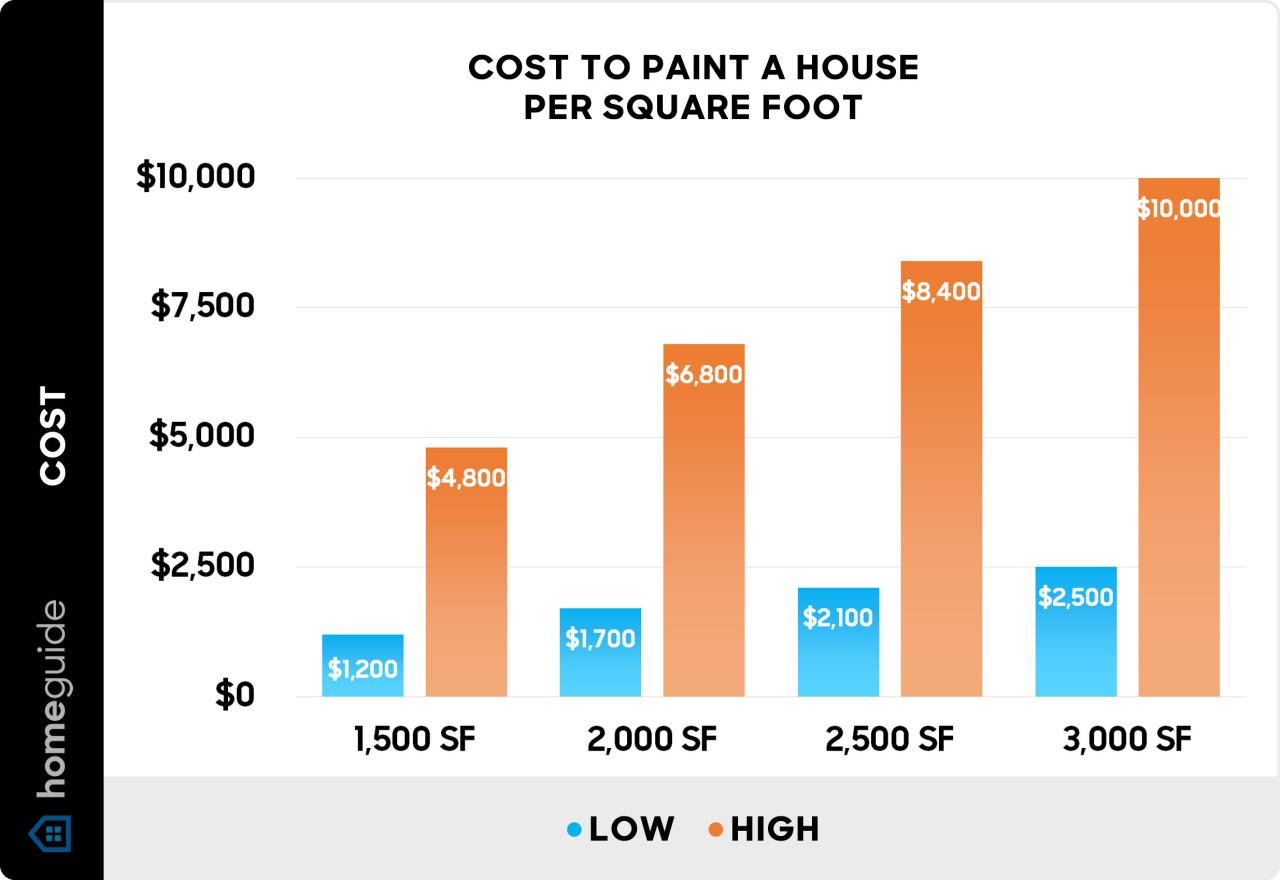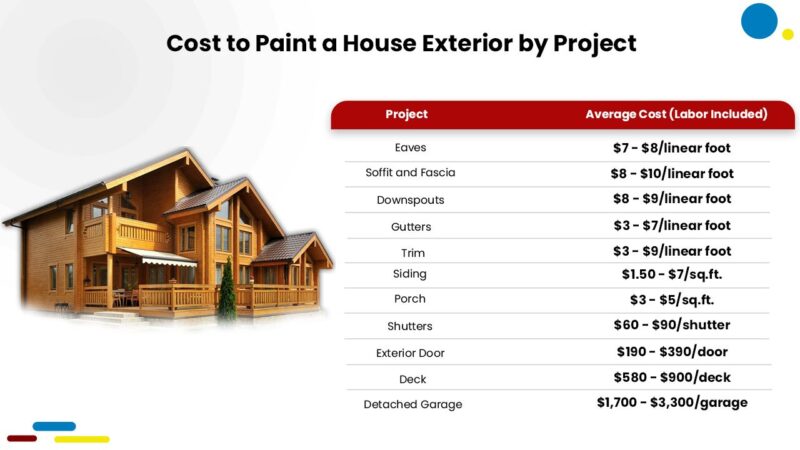Understanding Exterior Painting Cost: Factors, Estimates, DIY vs. Professional, and Cost-Saving Tips
Embark on a journey through the realm of exterior painting cost, where we unravel the factors influencing pricing, delve into average cost estimates, compare DIY versus professional painting, and unveil cost-saving tips. Let's explore the world of exterior painting costs together.
In this comprehensive guide, we will cover everything you need to know about the cost of painting the exterior of your home, from the size of your house to the quality of paint and more.
Factors Affecting Exterior Painting Cost
When it comes to determining the cost of painting the exterior of a house, several factors come into play. Understanding these factors can help homeowners budget effectively for their painting project.
Size of the House
The size of the house is a significant factor that influences the overall cost of exterior painting. Larger homes will require more paint and more labor hours to complete the job, leading to higher costs.
Quality of Paint
The quality of paint used can also impact the pricing of an exterior painting project. Higher quality paints tend to be more expensive but offer better durability and longevity, potentially reducing the need for frequent repainting in the future.
Condition of Current Paint Job
The condition of the existing paint on the house can affect the cost of repainting. If there are extensive peeling, cracking, or chipping paint that needs to be removed or repaired, it can add to the overall cost of the project.
Choice of Finish
The choice of finish, whether matte, glossy, or semi-gloss, can also impact the pricing of an exterior paint job. Different finishes require varying levels of preparation and application, which can affect the overall cost of the project.
Average Cost Estimates

When it comes to estimating the average cost of exterior painting, several factors come into play. One of the primary considerations is the size of the area to be painted, typically measured in square feet. Other factors such as the type of paint, surface condition, and labor costs also contribute to the overall estimate.
Breakdown of Average Costs per Square Foot
The average cost per square foot for exterior painting can vary depending on various factors. On average, homeowners can expect to pay between $1.50 to $4.00 per square foot for labor and materials. This cost includes the price of paint, supplies, and labor.
Keep in mind that this is just an average, and prices can fluctuate based on the specifics of the project.
Labor Costs Calculation
Labor costs are typically calculated based on the size of the area to be painted and the complexity of the job. Painting contractors may charge a flat rate per square foot or an hourly rate for their services. Additionally, factors such as the number of coats required and any necessary surface preparation can also impact labor costs.
It's essential to get a detailed estimate from your chosen contractor to understand how labor costs are calculated for your specific project.
Common Additional Costs
In addition to the basic cost of labor and materials, there are some common additional costs that homeowners might incur during the exterior painting process. These can include:
- Primer: If your surface requires primer before painting, this will add an extra cost to your project.
- Trim Work: Painting trim, doors, and other details can increase the overall cost of the project.
- Repairs: Any repairs needed to the surface before painting, such as fixing cracks or holes, will add to the final cost.
- Permits: Depending on your location, you may need to obtain permits for exterior painting projects, which can add to the overall cost.
- Additional Coats: If extra coats of paint are needed for full coverage, this will increase the materials cost.
These additional costs should be factored into your overall budget to ensure an accurate estimate for your exterior painting project.
DIY vs. Professional Painting
When it comes to exterior painting, homeowners often face the decision of whether to tackle the project themselves or hire professional painters. Both options have their pros and cons, including cost considerations, quality of work, and time efficiency. Let's explore the differences between DIY painting and hiring professionals.
Cost Comparison
- DIY Painting:
- Cost of materials: When painting the exterior of your home yourself, you'll need to purchase all the necessary supplies, including paint, brushes, rollers, drop cloths, and other equipment. While these upfront costs may seem lower than hiring professionals, they can add up quickly.
- Time commitment: DIY painting requires a significant time investment, especially if you have little to no experience. You'll need to prep the surfaces, apply multiple coats of paint, and clean up afterward, which can take days or even weeks depending on the size of your home.
- Potential mistakes: Without proper training and expertise, DIY painters may make mistakes that could result in additional costs to fix. This includes uneven paint coverage, drips, and other imperfections that may require professional intervention.
- Professional Painting:
- Cost of services: While hiring professional painters may seem more expensive upfront, it often includes the cost of labor, materials, and expertise. Professionals can provide a detailed quote upfront, so you know exactly what to expect without hidden expenses.
- Quality of work: Professional painters have the experience and skills to deliver high-quality results. They can ensure proper surface preparation, even paint application, and attention to detail that may be challenging to achieve with DIY painting.
- Time efficiency: Professionals work efficiently and can complete the job in a fraction of the time it would take a homeowner. This is especially beneficial for busy individuals or those looking to have their home painted quickly and without disruptions.
Cost-Saving Tips
When it comes to exterior painting, there are several ways homeowners can save costs without compromising the quality of the paint job. Proper preparation, smart choices, and long-term thinking can make a significant difference in the overall cost of the project.
Proper Preparation is Key
Properly preparing the surface before painting can help avoid costly mistakes and ensure the longevity of the paint job. This includes cleaning the surface, repairing any damage, and priming the area before applying the paint. By investing time in preparation, homeowners can prevent issues like peeling, cracking, or premature fading, which would require costly repairs down the line.
Choose Quality Paint Wisely
While it may be tempting to opt for cheaper paint options to save money upfront, investing in higher-quality paint can actually save costs in the long run. Quality paint tends to last longer, require fewer coats, and provide better coverage, ultimately reducing the need for frequent repainting.
Additionally, high-quality paint often contains more durable pigments and resins, making it more resistant to weathering and fading over time.
DIY vs. Professional Painting
Deciding between tackling the painting project yourself or hiring a professional can also impact the overall cost. While a DIY approach can save on labor costs, it's essential to consider your skill level and the time and effort required for the job.
Mistakes made during a DIY project could end up costing more in the long term if you need to hire a professional to fix them. On the other hand, hiring a professional painter with expertise and tools can ensure a quality finish that lasts longer, potentially saving on future repaints.
End of Discussion

As we conclude this discussion on exterior painting costs, remember that investing in the exterior of your home is not just about aesthetics but also about protection and value. Make informed decisions to enhance the beauty and durability of your property.
Question & Answer Hub
How does the size of the house affect exterior painting cost?
The larger the surface area to be painted, the higher the cost due to increased materials and labor required.
What impact does the quality of paint have on pricing?
Higher-quality paints tend to be more expensive but offer better durability and longevity, potentially saving costs in the long run.
How can homeowners reduce exterior painting costs without compromising quality?
One way is to properly prepare the surface before painting, which can prevent costly mistakes and rework.




